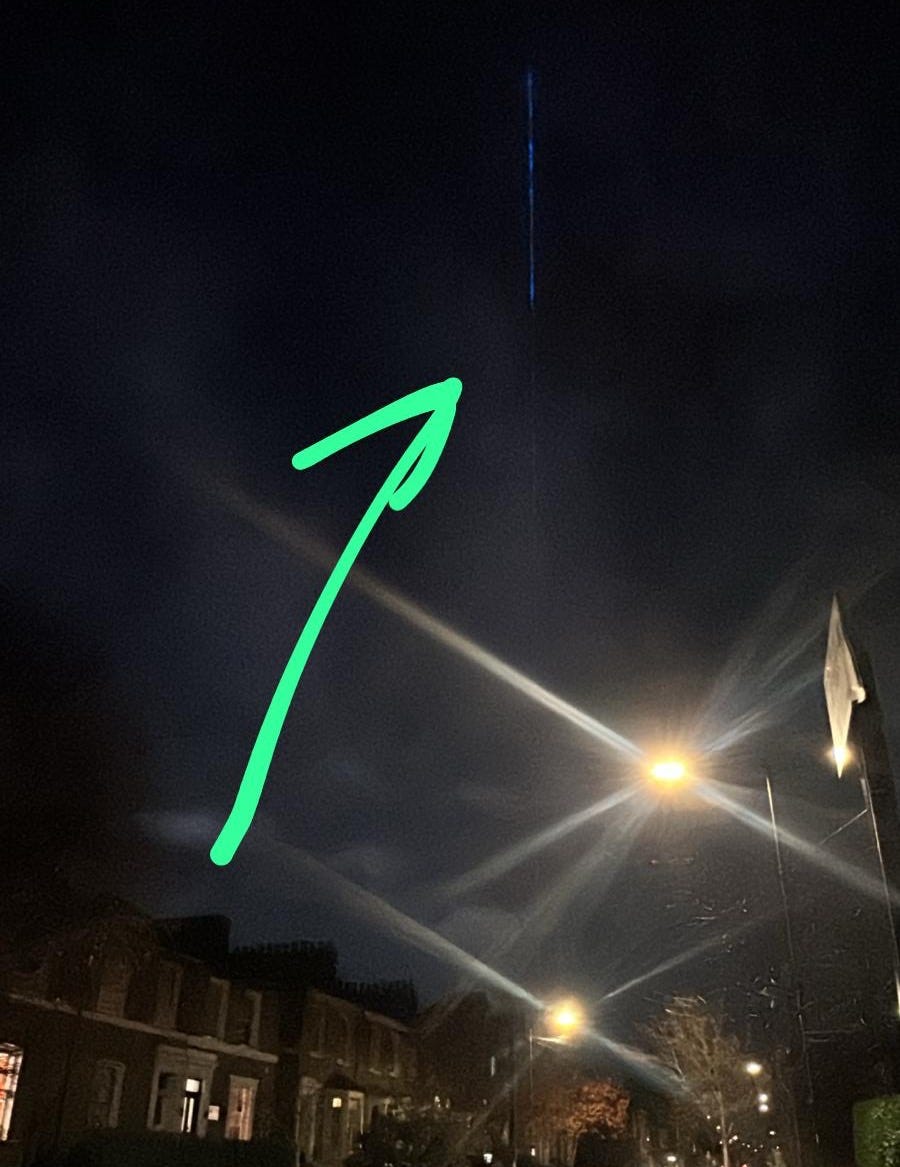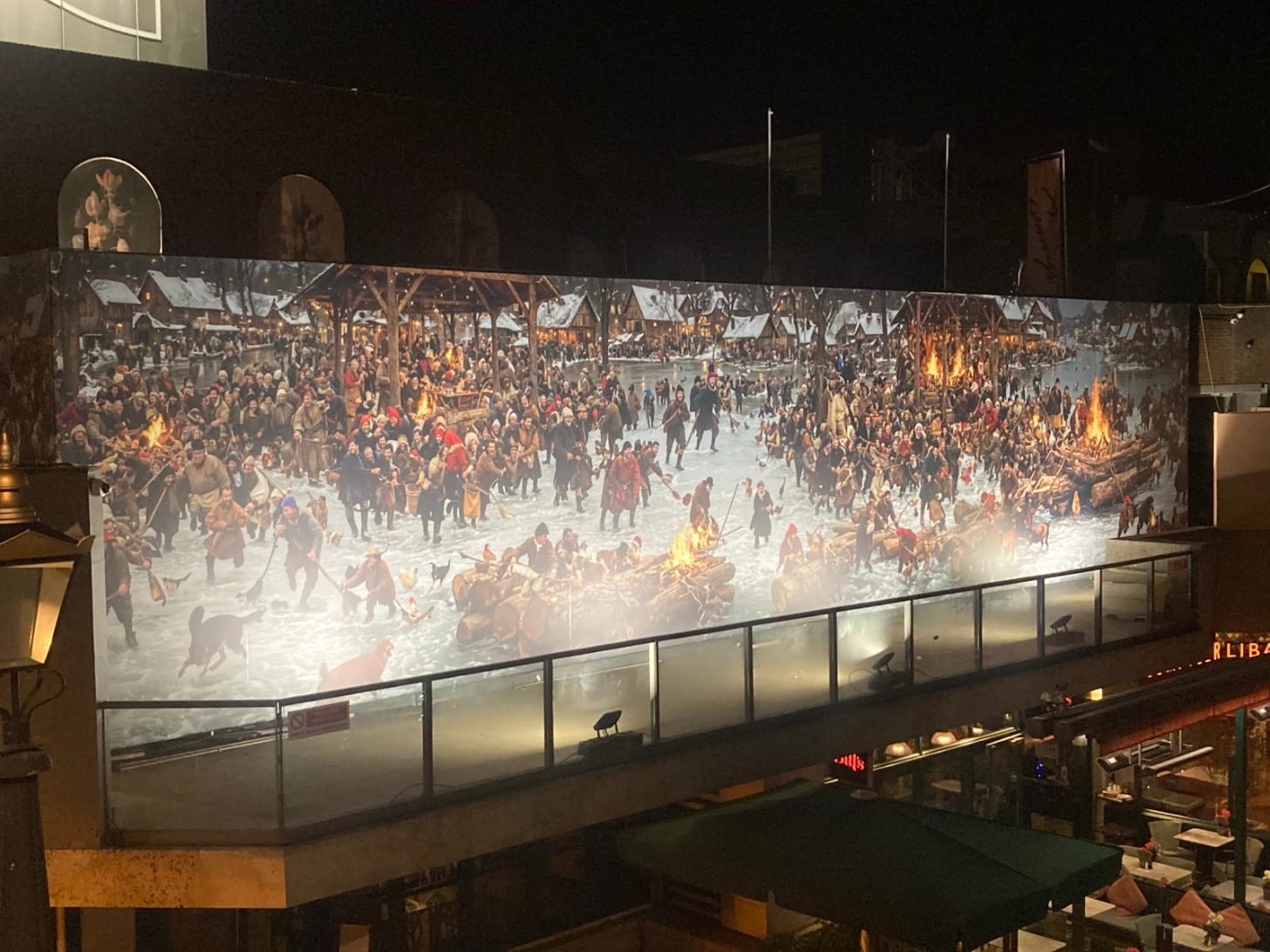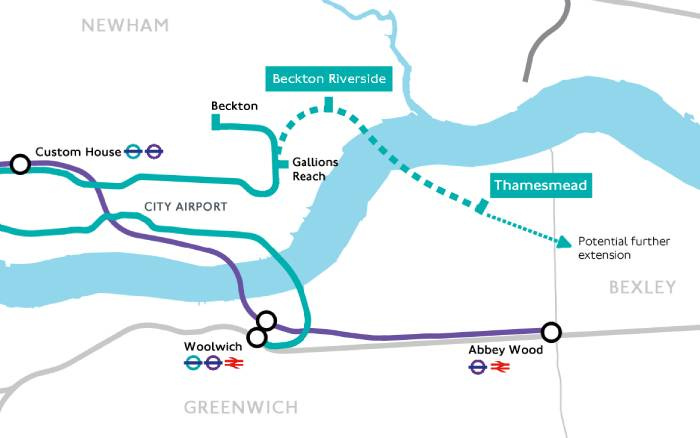London's giant AI artwork to be torn down
The bizarre story of why a much-talked-about creation is being torn down. Plus: Docklands Light Railway extension, a giant laser stalks the night sky, and more tales of Android phone theft rejection.
When London Centric first visited Kingston upon Thames’ enormous Christmas artwork on Monday night, we felt like we were encountering a strange vision of the future.
From a distance it appeared to be an attractive and original site-specific piece of festive work at the Riverside Walk development — something to be celebrated, especially in an era when it would have been easier for the owners to stick up another advert for dining discounts.
Yet up close something was uncanny about this modern recreation of an ancient frost fair of the River Thames, which filled a ten metre wall. Dogs blurred into chickens, humans became animals, and there was a truly grotesque snowman. In one section a penguin appears to be on fire. The south west London public passing by seemed to have an allergic reaction to its whiff of artificial intelligence, while online speculation suggested it must have been the creation of an overworked marketing intern.
Now, a well-placed source has been in touch to reveal that it is set to be torn down today after a public backlash — but almost certainly not for the reason you think.
The individual also claimed, in account backed by a second source, that the work was created by lauded artist Mat Collishaw. In recent years Collishaw has increasingly focussed on creating art with AI, including an exhibition that has been on display elsewhere in the same development.
Collishaw made his name as one of the Young British Artists of the 1980s, the movement that created Damien Hirst and Tracy Emin. He then embraced AI and virtual reality well before ChatGPT took it mainstream. Art critics are supportive, with the Guardian giving one of his recent AI-infused exhibitions a five-star review: “Hirst got the money and Collishaw the brains, passion and integrity”.
The artist did not respond to multiple requests for comment on whether he was involved in the piece.
In any case, London Centric has now been told the building’s owners are expected to remove the Christmas artwork due to an unexpectedly negative reaction.
Yet it wasn’t the use of AI or the abomination of a snowman that angered the Kingston public.
Instead, a substantial number of local shoppers have come to believe that the artwork’s depiction of people chaotically splashing through water is political commentary on the small boats used by migrants crossing the English Channel.
One manager of a restaurant in the complex, whose version of events was backed by other sources, told London Centric that this reaction to the artwork had been driven by local Facebook groups. The development’s owners insist that it is simply a Christmas scene inspired by the 16th century Flemish painter Pieter Bruegel the Elder. But this claim has not been accepted by some Kingston residents who view it as surreptitious political propaganda.
“There’s clearly something political about it but nobody knows what it is,” said the restaurant manager. He explained the majority of the people complaining about the artwork are against high levels of immigration and believe the artwork is an attempt to humanise small boat crossings because the people walking across the water have Christmas hats on.
The manager said he had encountered a different, smaller contingent of customers who oppose the mural because they think it’s mocking immigrants trying to get across the Channel on small boats.
London Centric has seen nothing to suggest the artwork is intended to be a commentary on migration, or anything other than a pastiche of 16th century art.
We also encountered claims that Liberal Democrat-dominated Kingston council, the home territory of party leader Ed Davey, had asked the landlord to take down the artwork amid the concerns over people were misinterpreting its meaning. In response a spokesperson said: “Kingston Council has had no involvement in the planning or funding of the display. The landowner has now confirmed to us that they will be removing the installation.”
When we visited the artwork yesterday afternoon we found a crowd of people taking photos, including a group of London Centric readers who had popped down to gawp after reading about it in an earlier newsletter. Some people had travelled from Berkshire to stare in wonder. While the AI hallucinations around the fringes have attracted attention, the overall impact is impressive. If it was intended to boost footfall at a tricky time for the hospitality trade, it was doing its job.
All of this builds the case that Kingston’s AI Christmas display is one of the most provocative artworks the capital has seen in years. As one diner exiting a restaurant argued: “It’s so bad it’s good.”
Who wants to pretend to drive a train to a new destination?
The Docklands Light Railway is going to have a new branch line to Thamesmead, including a tunnel under the River Thames, after the government agreed a funding package for the £1.7bn plan. The idea is that it will make it possible to build tens of thousands of new homes on the poorly-connected eastern fringes of the capital, with journeys from Thamesmead to Stratford reduced to just 25 minutes. A formal announcement is expected in next week’s central government budget, with construction due to be complete within a decade.
It’s a belated victory for Sadiq Khan, who had hoped to have the proposal for what he calls a “win-win” extension signed-off earlier in the year. Meanwhile, existing DLR users are still waiting for the much-delayed new trains, which were recently withdrawn from testing after one failed to stop at a station in the rain. And don’t even ask if the Bakerloo line extension to Lewisham is being funded anytime soon.
Other London measures expected in the budget include a tourist tax, a small payment on hotel and Airbnb stays that is common in many popular cities that people visit around the world. At the same time, inner London’s local councils are also nervously waiting to find out whether their budgets will be cut by ministers.
We’ve also spotted legislation in parliament confirming that Sadiq Khan will soon gain the power to overrule London’s local councils on licensing issues. In theory this should make it easier for bars and clubs to get later licences regardless of local concerns.
Laser-guided focus on bringing you the stories that matter
Finally, thanks to the many London Centric readers who got in touch to ask about the giant laser that could be seen in the sky across much of the capital last night.

Following extensive inquiries we can confirm it was… a giant laser. More specifically, it was a giant laser being demonstrated for the benefit of people interested in buying giant lasers, who were gathered at a lighting industry event held at Islington’s Business Design Centre.
The light was so bright that it had to have its own air traffic control warning notice issued so pilots landing planes at London airports weren’t distracted.
Late last night we called up Mark Warren of Kvant Lasers who was in charge of the demonstration of the metre-wide device, named the Architect W1500B. His company makes products to meet the “globally increasing demand for super bright lasers”.
“There are other lasers that are similar but they are not as powerful,” he explained. Warren suggested the Islington test attracted lots of attention from Londoners living miles away because, rather than wave the laser around the night sky, he maintained a single upwards beam that could be seen across the capital for an extended period of time, prompting bafflement.
We asked how much it would cost for London Centric to buy one of his giant lasers, which could be used to signal the release of a new edition of this newsletter. Warren said it might be out of our price bracket: “It’s six figures upwards.”
London Centric stories having impact thanks to the support of our paying members…
After our story on this week’s impending privatisation of a social housing block by the “dishonest” property developer James Gold, Tower Hamlets council told residents they would be delaying the transfer for a short period of time. Other media outlets are now sniffing around the story.
Our big investigation into London snail farming continues to slither up the news agenda. It was namechecked by The Economist, who did their own piece on the topic.
Our story about London phone thieves handing back Android devices mid-mugging hit a nerve. We had dozens of Londoners get in touch to describe their experience of exactly that happening to them. Many described the strange sensation of being mildly offended when they realised their much-loved device simply wasn’t desirable to the capital’s criminal community.
“I am simultaneously relieved and slightly insulted,” said one reader. Another reader said they’d read the piece on Tuesday, then had their phone snatched then handed back within 24 hours.
Theories abound as to why, with the more varied product range produced by Android manufacturers posited as one suggestion. Older iPhone models can also be discarded by connoisseur thieves, according to some of those in our comments section.
What we can’t work out is whether this is a PR positive for manufacturers of Android devices. Should they sell their products as “the phone that won’t get nicked”? Or is it a negative to be known as “the phone that thieves don’t want”?
Thanks to all the subscribers who made this edition possible. All of our best stories come from our community of readers — please do get in touch if you’ve got a tip we should be looking into via WhatsApp or email. One of the best ways you can support London Centric is recommend us to your friends or post about our stories.









On the riverside underneath that artwork is a place that hires out small boats. Presumably they’re next in the sights of the angry Karens.
Looks a bit like Cold War Steve to me - political surely? Even if only in an unnerving dark-vibe-inducing way.